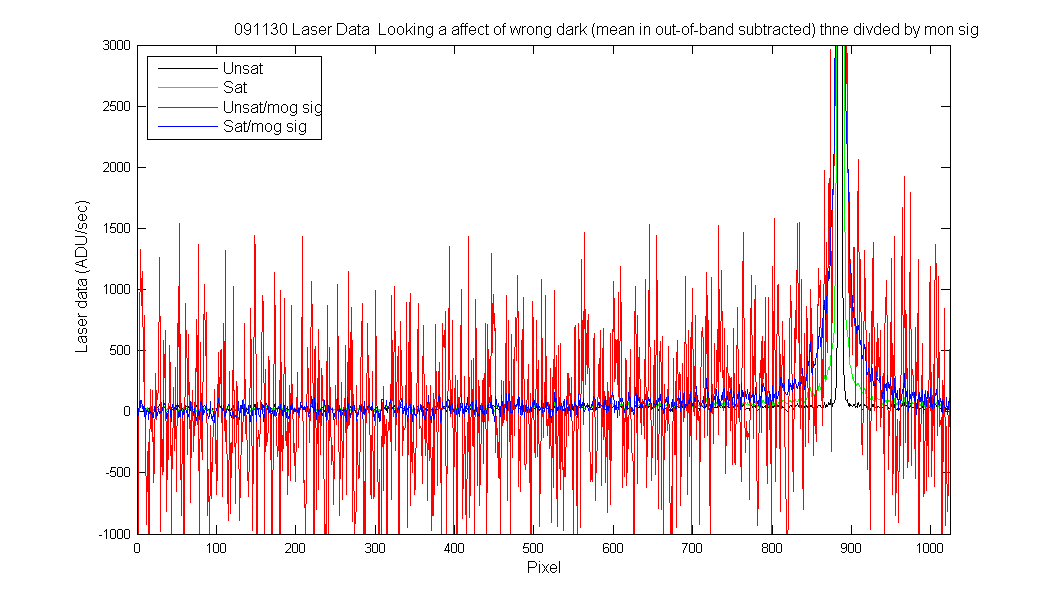Another issue which came up during Carol and I's trip to Oregon was the problem with the laser data.
When I originally processed the laser data the only darks collected were using the accumulation mode. Dark files were collected with 10 accumulations. The result is a file with 1 frame (not 10) and that frame had 10 integration times accumulated on it. The dark used would be DARK/10 to get to 1 accumulation. But when I used the SIRCUS_550_27 file I got figure 1 below. The darks were too high. Which means dividing by 10 was not enough to normalize the 10 acculations.
So I decided to use a dark scan from a prevoius experiment (091120_Carol_Bob\Back0.mat) with the same int time, this produced Figure 2 below. Notice that when normed to Monitor Signal the out-of-band of the saturated and unsaturated data do not match. This indicated to Al that there was something wrong with the darks being subtracted. Ie the out-of-band on the saturated and unsatureated data should be the same one should just be noisier than the other. So this dark is too low. Also note that the dark files used had only one frame but so did the laser data so we are comparing apples to apples.
Check out Figure 3-5 for other insites.
Moral of the Story :-)
Laser data processed using the accumlation dark.
Figure 1
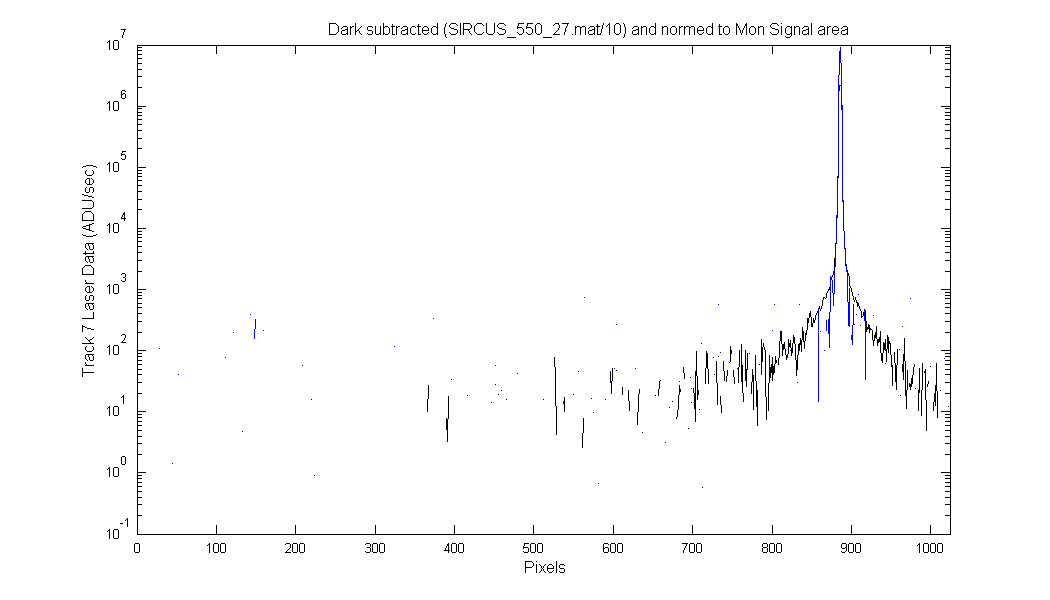
Laser data processed using the 1 frame dark at 0.1 sec.
Figure 2
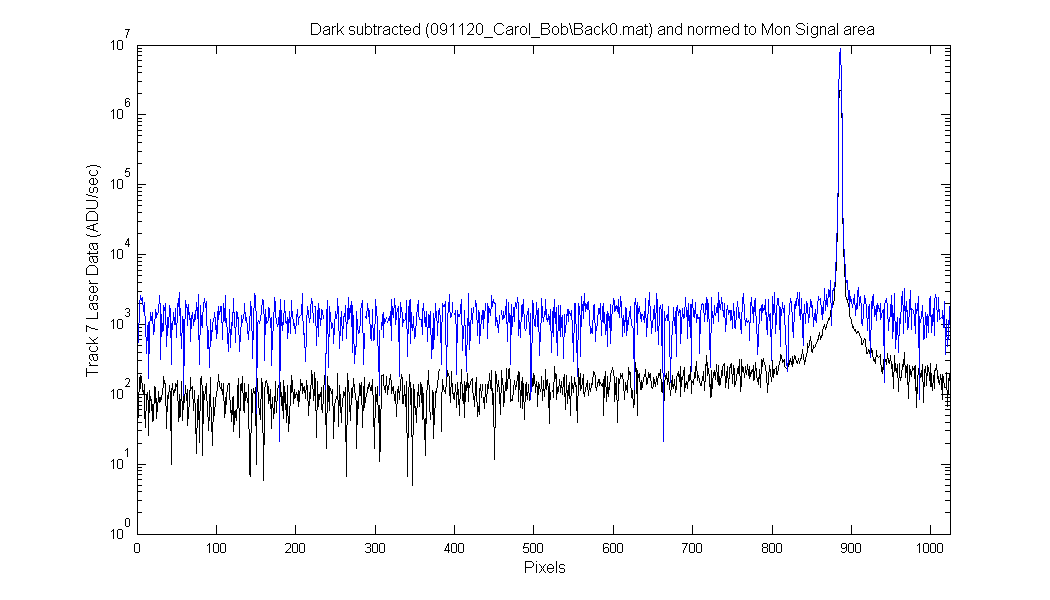
This shows the two dark options and the laser data. Note that the red is too high the blue dark is lower than the light but is too low.
Figure 3
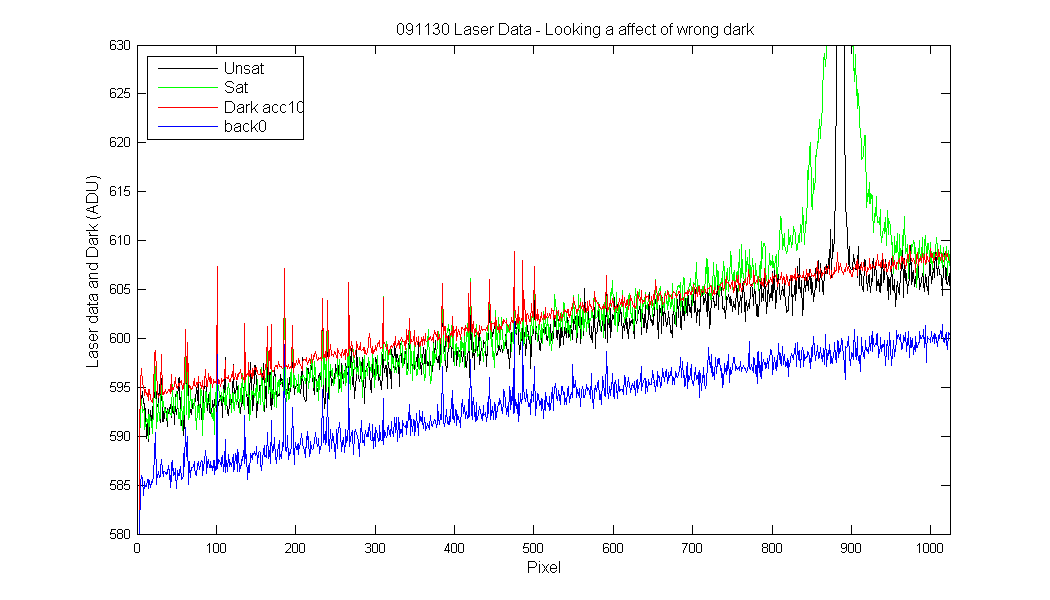
When you divide by the monitor signal the sat and unsat out-of-band are no right.
Figure 4
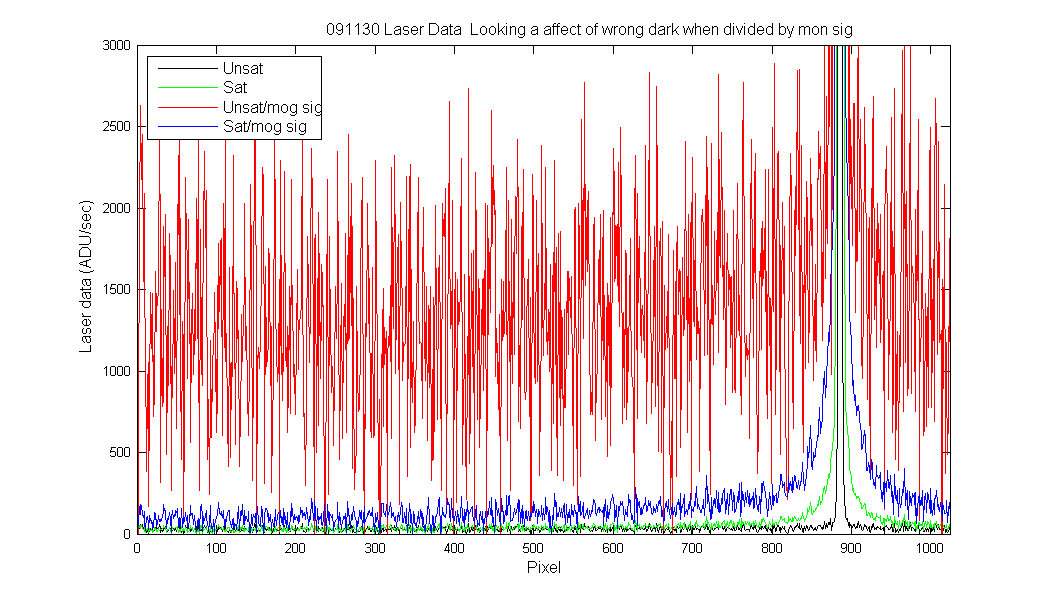
If you mean pixels 6-20 in laser data and subtract this off the laser data and divide by the monitor signal then the out-of-band matches up for the sat and unsat data. This means we don't have the right darks for the current laser data.
Figure 5
